With Frieze Week upon us, art lovers and connoisseurs will be looking to see what styles and concepts are emanating from the New York art scene. Historically, fairs have been a reliable barometer; this time around, they match what’s happening at major Manhattan institutions – and diversity in every way is the name of the game.
Four women artists are currently presenting major museum exhibitions – Wangechi Mutu at the New Museum, Sarah Sze at the Guggenheim, Georgia O’Keeffe at the MoMa and Cecily Brown at the Met – a showcase of identity, ideology and practice that has been historically shunned in the art world. The gloriously diverse visions of two of the four, Mutu and Sze, set the tone for the city as a whole, working, as they do, in surrealism, science fiction, futurism, spirituality, ritual, l hapticity and temporality. From this array of modes, we can disentangle a cluster of related themes currently bouncing across the New York scene: celebration of craft and hapticity, spirituality and return to ritual, and new mythologies and construction of the world. This overview of gallery exhibitions and fair presentations articulates a picture of the New York art scene at the moment.
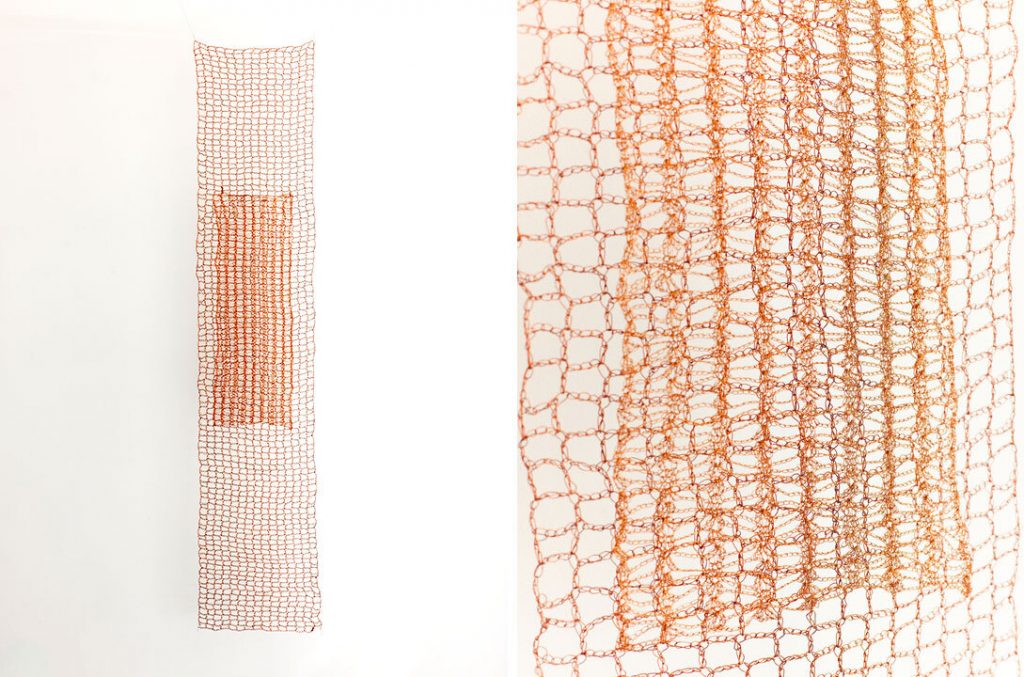
ektor garcia, crocheted copper wire trellis (2021, detail on the right), which will be offered at NADA New York. Photo: Robert Divers Herrick, courtesy of the artist and Rebecca Camacho Presents.
Throughout the city, handicrafts of all kinds – ceramics, textiles, sculptures, assemblages – tell stories of touch and tradition, engaging in practices largely marginalized in art history. At NADA New York (May 18-21), Rebecca Camacho Presents will show delicately rendered copper wire sculptures in the form of butterflies and chains by ektor garcia, and the boldly colored and impeccably cut ceramic sculptures by Maria Herwald Hermann that reframe our relationship to household objects and everyday life. “There is a tactile thread, a hand mark that connects all the work,” Camacho says of the six artists in his presentation for NADA.
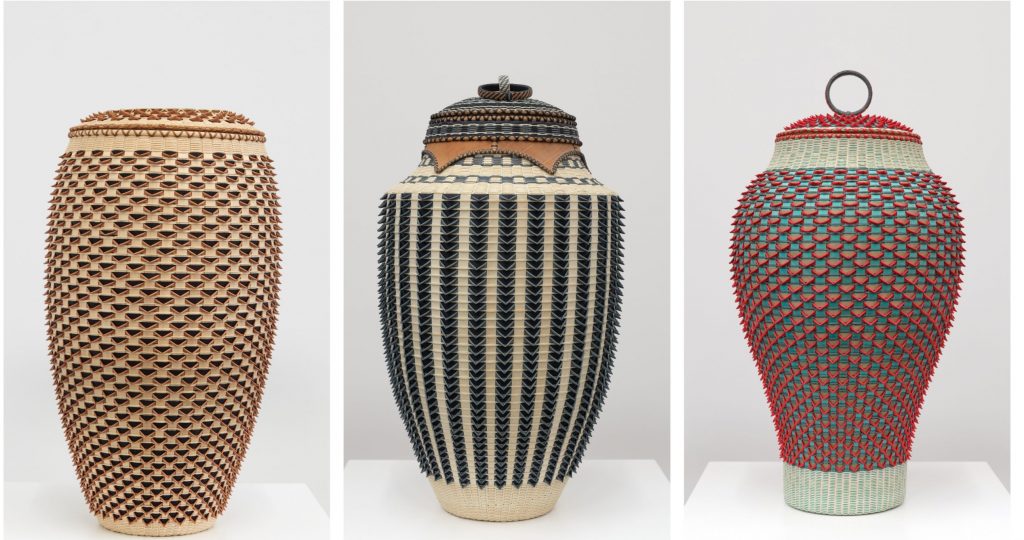
Jeremy Frey dive (2015), Permanence, (2023), and Will have (2023). Courtesy of the artist and Karma.
At Karma in the East Village, Jeremy Frey’s hand-woven baskets (featuring the solo “Out of the Woods” until June 17) also engage in intimate and culturally rich handiwork, drawing on indigenous traditions local to the Wabanaki of the northeastern United States. During his first presentation at Frieze New Yorkwhich bows at the Shed from May 18-21, welcomes participants for the first timeincluding, Silverlens from New York and ManilaWho will present works by Carlos Villa (1936––2013), a beloved Filipino-American artist, activist, and teacher whose feathered coats and dynamic, swirling designs draw inspiration from a diverse list of non-Western ethnicities. traditions the references like the natives feathered sandals and tapa fabric patterns.
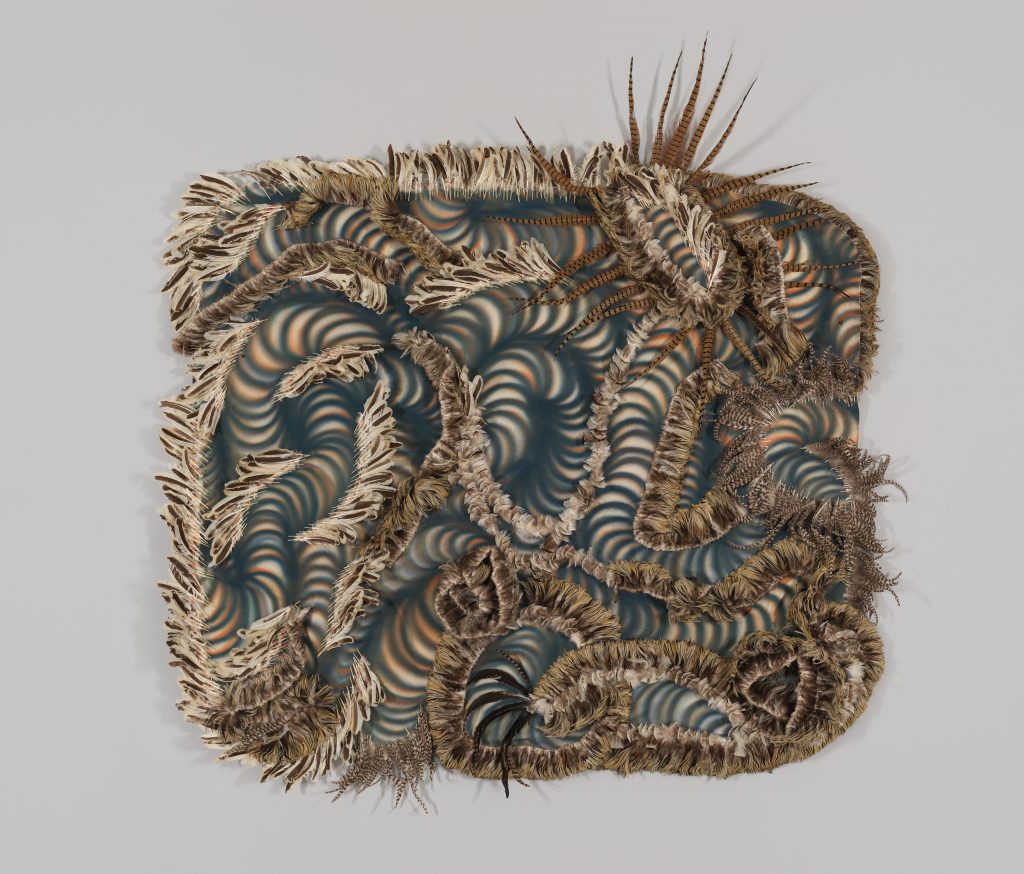
CarlosVilla, My roots (1970–71). From the collection of the Whitney Museum of American Art, New York; purchase with funds from the Neysa McMein Purchase Award 72.21. Courtesy of the Estate of Carlos Villa, the Whitney Museum of American Art (New York) and Silverlens (Manila and New York).
This turn to craftsmanship is akin to another kind of return: to ritual and spiritual modes of problem solving. “There is a lot of interest in spirituality, the occult and astronomy, I think because we just ran out of solutions for the end of the world,” says independent curator Ksenia M. Soboleva. Spiritual inquiry and mystical play abound in “Diagram: World as a diagram” at the Marlborough Gallery, which opened last week at Chelsea and runs until August 15. Organized by Raphael Rubinstein and Heather Bause RubinsteinThis investigation explores schematic ways of thinking in visual art. More than 50 the artists hail from a number of eras, many of whose work feels extraordinarily in line with their peers today.
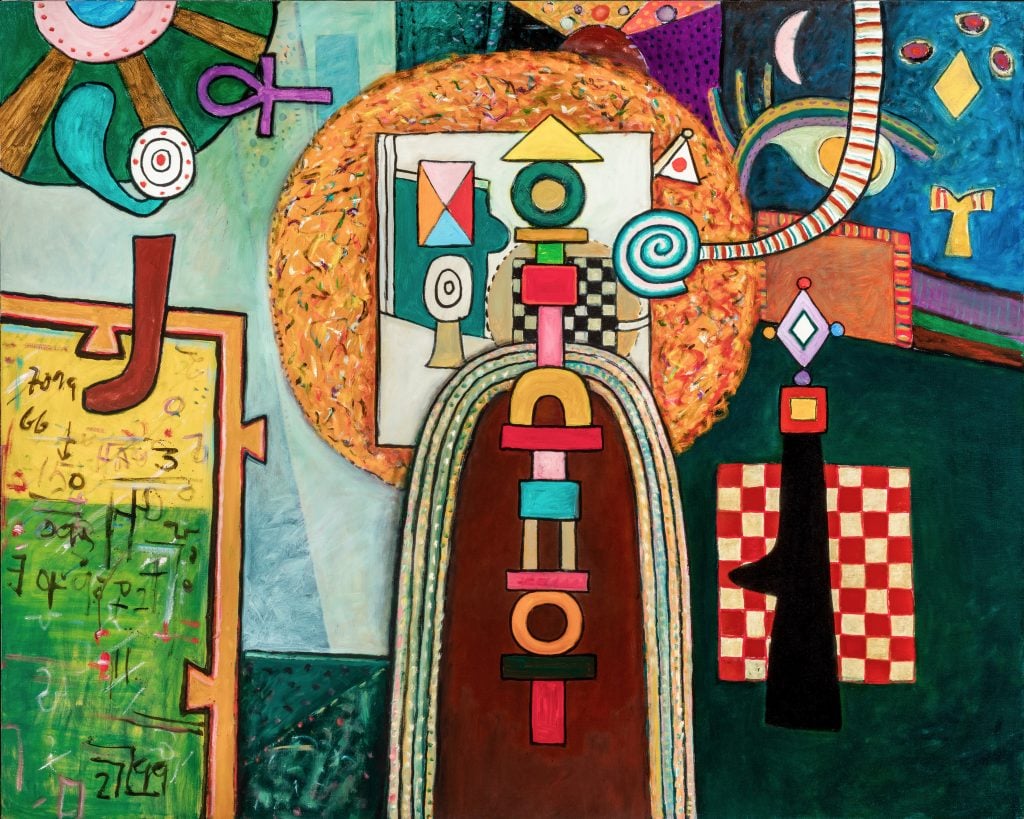
Alain Davis, Workshop n°37 (1975). © The Estate of Alan Davie, courtesy of Taylor | Graham, New York.
Alan Davie is brightly colored Workshop n°37 Since (1975) borrows symbols from a multitude of religions and cultures, such as the mandala and the anchorh, to ward off “mysterious and spiritual forces normally beyond our apprehension”. The Hilma’s Ghost collective works to extend the spiritual vision of Hilma af Klint to the 21st century by creating drawings, a Tarot deck, prints, and here, a geometric painting that celebrate the artist through feminist and mystical rituals. Two incredibly detailed works from the 1990s by Paul Laffoley blend science, Christian iconography, Buddhist mandalas and William Blake, recasting reality through the artist’s visionary lens.
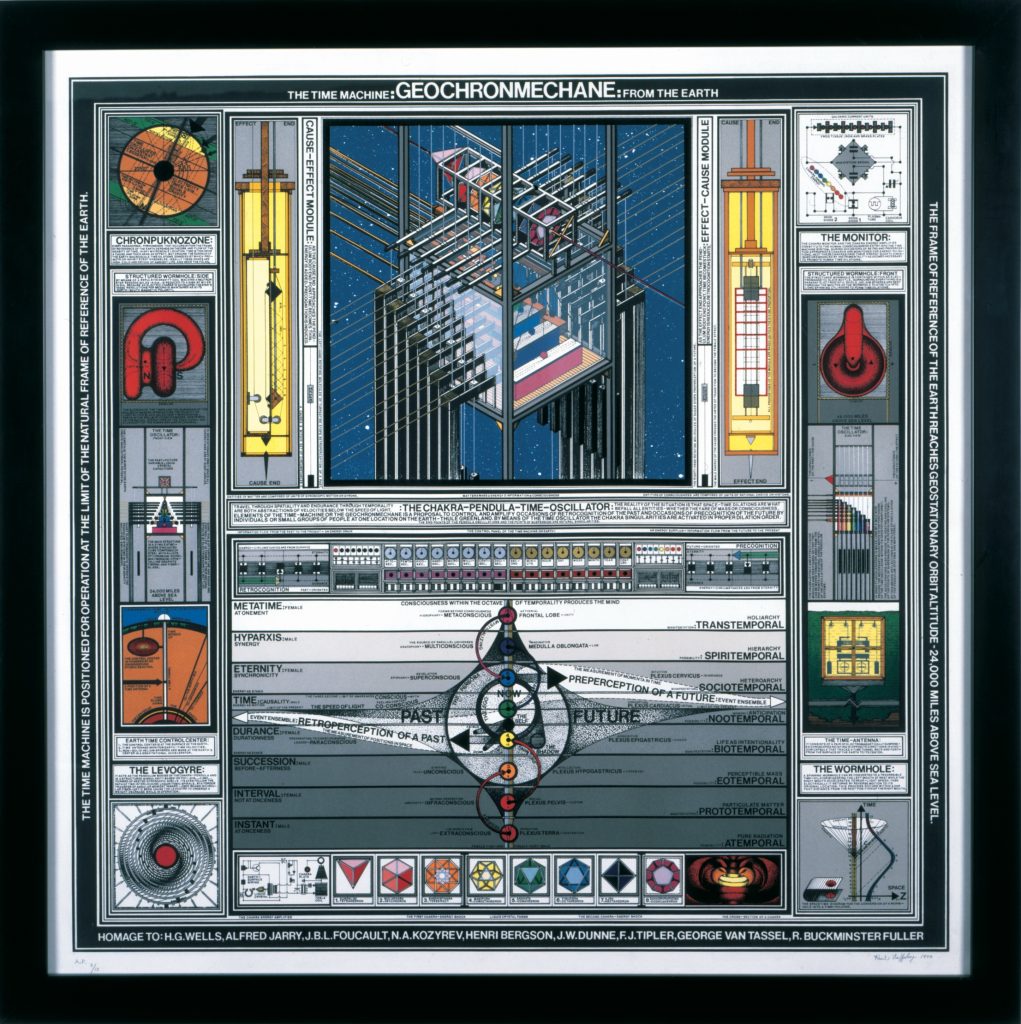
Paul Lafoley, Geochronmechane: the time machine from Earth (1990). © The Estate of Paul Laffoley, courtesy of Kent Fine Art, featured in “Schema: World as Diagram” in Marlborough New York.
On Downtown,To Bortolami in Tribeca unveiled a presentation of Joe Ray—one of the few black practitioners of the Light and Space movement—explores the cosmos in his show “Upside down” (on view until June 17). Her “Nebula” paintings, an ongoing series of intergalactic landscapes he began in the 1970s, composed of aerosols and resin, suggest a fusion of inner and outer space, as well as Afrofuturistic possibilities.
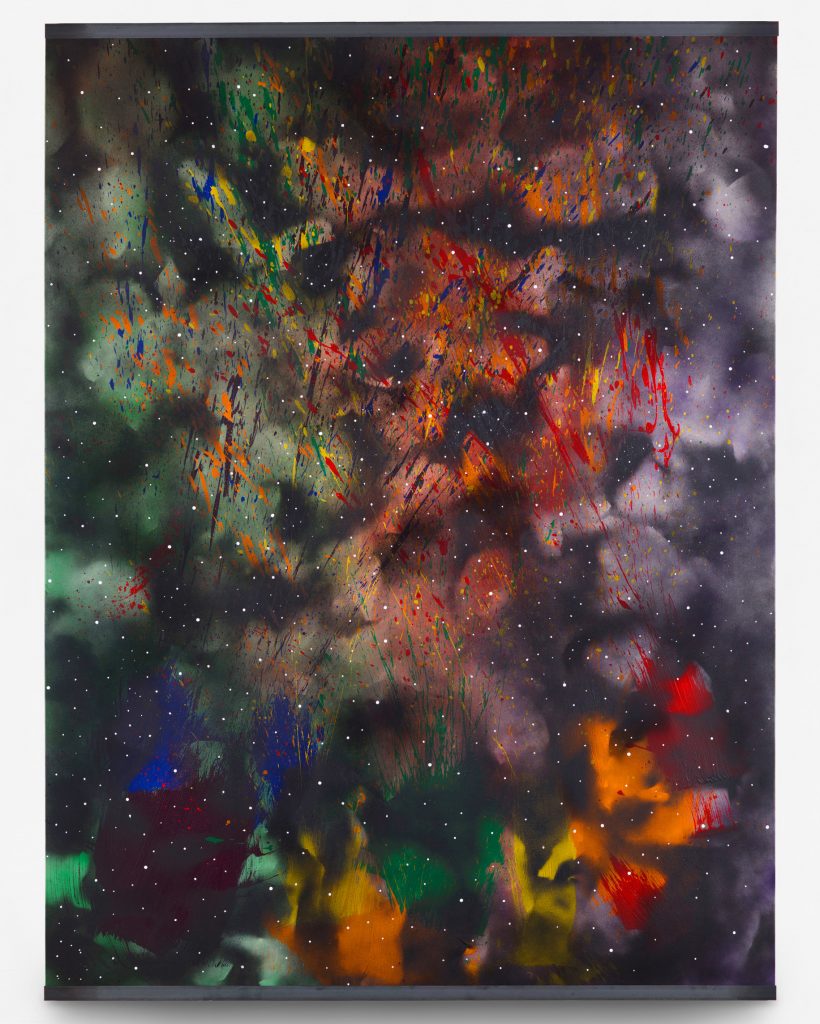
Joe Ray, Mildred Ann (2023). Photo: ofstudio, © Joe Ray, courtesy of Bortolami.
Futurism and new worlds and mythologies also seem to be on top of THE mind Fors of young artists, many of whom work in a quasi-narrative mode, creating new mythologies and building new worlds. As part of Frieze New York, David Kordansky will present work relating to by Lauren Halsey current installation on the Met MuseumIt is roof, the east side of the prototype hieroglyph architecture of south central los angeles (I). Jthe stone face of the monument, which refers to the temple of Dendur in the museum and the Egyptian Wing, is full of images of the Watts Towers, graffiti, protest slogans and other signs of black urban life and Afrofuturism. Halsey opts for a new suite of digital collages and gypsum-based prints for Frieze.
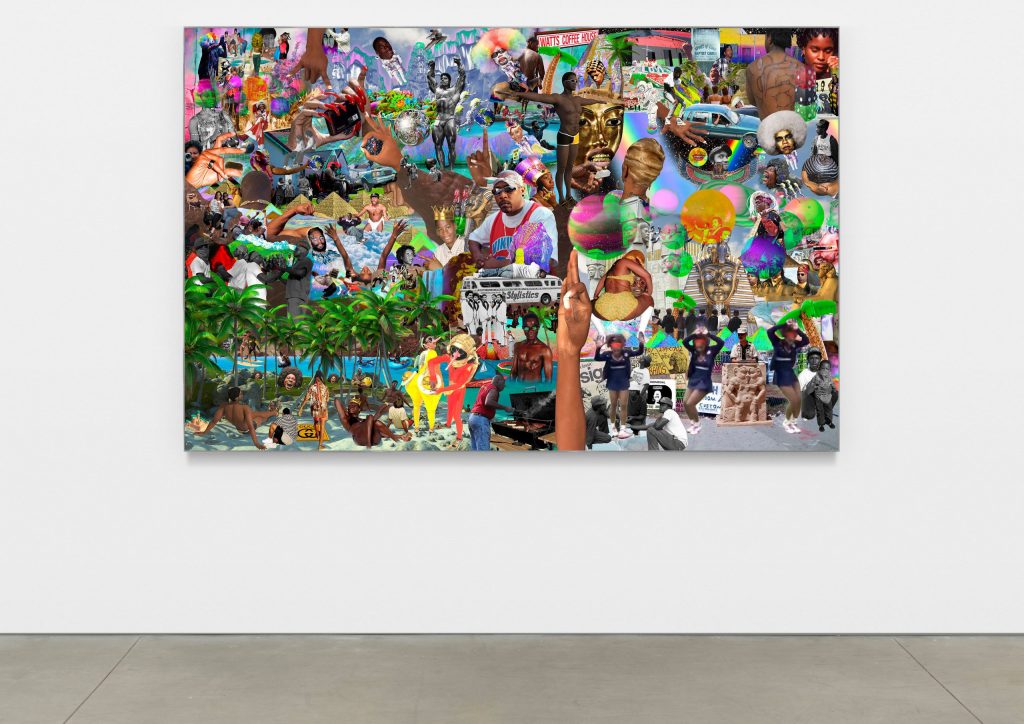
Lauren Halsey, Untitled (2023). Photo: Courtesy of the artist and David Kordansky Gallery.
As seen across the city, artists are creating new universes we can live in, says Lubov gallery owner Francisco Correo Cordeo. “There’s a lot to imagine what the future will look like,” he says, “as well as the different versions of the future that can happen depending on what we’re doing right now.”
Follow Artnet News on Facebook:
Want to stay one step ahead of the art world? Subscribe to our newsletter to receive breaking news, revealing interviews and incisive reviews that move the conversation forward.
